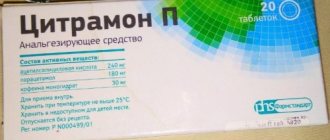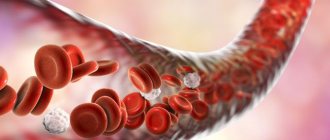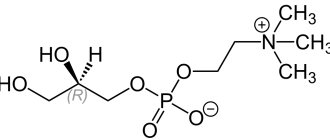Pramiracetam is a drug that can improve memory and overall cognition. Its unique properties make it a potentially powerful brain performance optimizer on its own or in a nootropic stack.
library
| Pramiracetam | |
| Also known as | Neupramir, Pramistar |
| Type |
|
| Good for |
|
| Goes well with |
|
| Typical Dose | 400–600 mg |
| Half life | 4.5–6.5 hours |
Benefits and Effects of Pramiracetam
Pramiracetam is a true nootropic created specifically to improve cognition. Its benefits and effects include the following:
Improved memory
Pramiracetam is a proven memory enhancer that has been extensively tested for several decades. It has proven effective in both animal studies and clinical trials on young people with cognitive impairment due to brain injury.
Pramiracetam improves memory by stimulating the hippocampus, the part of the brain responsible for creating new memories. It is also effective in reducing forgetfulness. This dual action makes Pramiracetam a very effective memory enhancer. User reviews also report significant improvements in memory recall speed, which is supported by animal studies.
Increased attention and improved learning ability
Pramiracetam's reputation as a general cognitive enhancer has made it a popular choice among students.
Pramiracetam contributes to mechanisms underlying learning and memory by increasing neuronal nitric oxide synthase (NOS) activity in the hippocampus. NOS activity is associated with neural development and brain plasticity, which are critical for all aspects of cognition.
Pramiracetam is also known to increase the absorption of choline, thereby indirectly stimulating the production of acetylcholine. It is an important neurotransmitter that is closely associated with learning and cognition.
Dementia treatment
Open-label studies in patients with primary degenerative dementia show that pramiracetam is effective in reversing amnesia, significantly improving memory and reducing forgetfulness.
In other studies that measured the effects of pramiracetam and other racetam class nootropics in patients with mild to moderate dementia, results included cognitive and memory improvements. These results are believed to be due, at least in part, to the nootropics' potentiation of existing neurotransmitters.
Pramiracetam is commonly prescribed in Europe to treat dementia and other cognitive problems; associated with Alzheimer's disease and other neurological disorders.
"Social Freedom"
According to user reviews, it is known that pramiracetam makes them more creative in communication and socially free. This may be due, at least in part, to the supposed emotional blunting of pramiracetam. This effect may reduce social anxiety and, in turn, increase social freedom.
Neuroprotective capabilities
Pramiracetam is known to have significant neuroprotective effects that can improve cognitive function in people who have suffered traumatic brain injury.
It also has a pronounced neuroprotective effect when used during coronary artery bypass surgery, as well as in the treatment of cognitive disorders of cerebrovascular origin.
Positive effects of Pramiracetam
Cognitive function and memory . The drug optimizes brain function and provides a noticeable improvement in cognitive functions, especially in relation to memory, both in formation and consolidation. Memory is improved by stimulating the hippocampus, the part of the cerebellum that is responsible for forming new memories. This nootropic is effective against drug-induced amnesia and reduces the effects of amnesia in young and old people.
Depression and anxiety . Pramiracetam restores cognitive impairment, has neuroprotective properties and reduces general symptoms of depression. Although some users describe improvement in anxiety and depression-related symptoms, pramiracetam should never be taken as a replacement for prescribed anti-anxiety or antidepressant medications
Concentration of attention . Unlike amphetamines, pramiracetam does not cause a stimulant effect and allows you to concentrate without feeling jittery. People with ADHD report feeling much improved concentration without the side effects of traditional medications.
Learning ability . The drug helps the formation of new synapses, which also improves communication between neurons, helping to create memories. As new information is learned, new synapses are formed. This is how learning happens.
Sensory perception . Clinical studies show that pramiracetam improves sensory perception and enhances observation. This includes more vibrant sound and an enhanced visual experience with distinct color contrast.
How pramiracetam works
Like most nootropics, pramiracetam affects the release of neurotransmitters. Brain chemicals that transmit signals from one nerve cell to another. But pramiracetam does this in an indirect way, different from the normal action of racetam supplements, and also stimulates the brain in other ways.
Most racetams work by directly stimulating neurotransmitters, thereby increasing their production. But pramiracetam does not directly lead to changes in neurochemical levels. Its main direct effect is to significantly increase choline uptake in the hippocampus.
Choline is a precursor to acetylcholine. A neurotransmitter deeply involved in all cognitive processes, including learning speed, memory and concentration.
By stimulating the uptake of choline, pramiracetam indirectly modulates the release of acetylcholine and stimulates increased activity in the hippocampus. Because this part of the brain is important for memory function, the overall stimulation that pramiracetam provides can improve both the formation of new memories and the retention of referent or long-term memories. Increased activity in the hippocampus also increases cerebral blood flow, which increases attention and improves overall cognitive performance.
Pramiracetam may have other mechanisms of action. Researchers have hypothesized that in addition to its effects on the brain, pramiracetam acts in peripheral sites outside the brain that are dependent on the adrenal glands.
Animal studies suggest that pramiracetam may also increase or restore the fluidity of brain membranes, which facilitates cell signaling.
Unlike many other racetam class nootropics, pramiracetam does not appear to actively alter wakefulness or emotional states. This may be explained by the limited effect of pramiracetam on the production and release of neurotransmitters that have the greatest impact on mood and anxiety levels, such as serotonin, GABA and dopamine.
Pramiracetam is fat soluble, not water soluble, which means it is absorbed into the bloodstream through fatty acids. It reaches peak concentrations and maximum bioavailability relatively quickly, usually within 30 minutes, and has a moderately long half-life of 4.5-6.5 hours.
How does pramiracetam work?
As per tradition, we will use the Analysis method to determine the basic principles of how pramiracetam works. Analysis is breaking something big and complex into something simpler and more understandable. Therefore, first, let's look at the molecule of this nootropic drug.
We see a clear similarity with the piracetam molecule, and therefore they are certainly “relatives”. As a result, they will exhibit some common characteristics.
- Pramiracetam has almost no effect on any neurotransmitters. This means that it really does not disrupt the usual rhythm of life. There are no phenomena of hyperstimulation or sedation.
- There is a serious effect on only 1 neurotransmitter - Acetylcholine. Here's a little more detail.
In studies on rats (https://www.ncbi dot nlm.nih.gov/pubmed/2987637), an increase in choline uptake was found in the hippocampus (the part of the brain responsible for memory). As you know, choline is a precursor for the neurotransmitter acetylcholine, which is released during learning (it doesn’t matter whether you’re walking around a new city or writing a report). And piracetam enhanced the effect of acetylcholine on receptors.
That's the difference! To make it clearer, imagine that you need to get into an apartment, you stand on the landing in the entrance and knock on the door, but no one hears you. Piracetam will make you knock harder, and Pramiracetam will make you call your friends and bang in a crowd. This is what happens in the head between neurons and neurotransmitters.
Today's nootropic physically increases the amount of acetylcholine circulating between neurons.
Another study also on rats (https://link.springer dot com/article/10.1007%252FBF00174378). Regarding the memory action. 3 groups of rats, the 1st received pramiracetam at a dosage of 7.5 mg/kg, the 2nd at a dosage of 15 mg/kg, the 3rd did not receive anything. The rats were placed in a maze, waiting for them to complete it, where goodies were waiting for them. Then, at regular intervals, they were put back in the same place. After 1 and 2 weeks there was almost no difference; all groups completed the maze faster by an average of 60 and 65%, respectively. However, already from the first week, the group that received nothing was several percent behind. From the 3rd week the gap increased to 15% and remained approximately even until the end of the study. The higher dosage simply reached the ceiling faster.
That is, there is reason to believe that pramiracetam immediately improves memory, but only slightly, and after 3 weeks, at least in rats, their memory improved by 15%.
- There is mild AMPakine activity, which is present in all racetams. AMPA receptors are the 2nd main “button” for transmitting excitation between neurons, the 1st are NMDA receptors. In general, with the activation of AMPA receptors, signals in the brain will travel faster, and as a result, a larger array of data will “fly through” per unit time.
- Improving cerebral circulation. Promotes better delivery and utilization of oxygen in the brain.
To briefly summarize: Pramiracetam improves blood circulation, increases the absorption of choline and creates acetylcholine in a larger volume than piracetam, and acts on AMPA receptors.
Instructions for use, dosage of pramiracetam
Existing human studies have used a total daily dose of 1200 mg of pramiracetam, divided into two or three doses per day.
This dosage is optimal, effective and well tolerated. It can be a good guide in determining dosage based on personal needs.
It is always advisable to start with the lowest possible effective dose and adjust the amount if necessary.
The fact that pramiracetam is fat-soluble and not water-soluble means that mixing the powder with water or any non-greasy liquid is difficult. Instead of dissolving, it will simply float on the surface. Some users report diluting their dose of pramiracetam powder with a small amount of oil. It may also improve absorption and bioavailability.
Many people prefer to take pramiracetam in capsule form because of its taste.
Combining Pramiracetam with Other Supplements
Pramiracetam works well on its own. But one of its most interesting aspects is that it is a powerful potentiator for other nootropics, increasing their effectiveness.
It is a particularly effective potentiator for other racetams, making it a natural addition to most nootropic stacks.
Adding choline to a pramiracetam stack may have several benefits. Not only can it enhance the effects of pramiracetam, but it can also prevent headaches, which is the most common side effect.
Since Pramiracetam has such powerful effects, it is advisable to use it on its own for a trial period before combining it with other nootropics.
Stack of Pramiracetam and Oxiracetam
Combining pramiracetam with an energy booster such as adrafinil or oxiracetam can enhance mental alertness and last longer.
1 per day
- Pramiracetam 300 mg
- 750 mg oxiracetam
- 300 mg CDP choline
Pramiracetam and Aniracetam
Combining pramiracetam with a powerful anti-anxiety drug like aniracetam can give users increased alertness, improving mood and reducing feelings of mental stress and restlessness. Reviews report that this stack promotes fluent communication and improves their public speaking ability.
1 per day
- Pramiracetam 300 mg
- 750 mg aniracetam
- 300 mg CDP choline
How the drug works
The principle of action of Pramiracetam is based on an analogy with choline, which is necessary for the aggregation of acetylcholine, which serves as the main neurotransmitter.
The drug takes part in the connection of phosphatidylcholine, improves the plasticity of neuronal membranes and restores their structure. Affects the thought process and verbal presentation, attention, memory in the learning process. For headaches and dizziness, it reduces the feeling of weakness and lethargy. The main beneficial property of Pramiracetam is increased blood circulation and, as a result, increased oxygen consumption and increased glucose metabolism. This gives a person a feeling of purity of understanding, improves concentration, increases attention, and accelerates brain activity in processing information. The nootropic optimizes the utilization of polysaccharides and inhibits free radicals, increases the concentration of dopamine, norepinephrine, serotonin, and acetylcholine. Improves the transmission of signals from one nerve cell to another.
Pramiracetam does not cause addiction or nervous overstimulation, does not have sedative properties, and does not cause drowsiness. The drug stabilizes the metabolic processes of the central nervous system. Increases a person's concentration time on something and their ability to remember in learning, and is an effective antidepressant.
Pramiracetam is quickly absorbed from the intestinal system and enters the bloodstream. The maximum concentration in the body occurs after two hours. Half-life time is six hours. It does not combine with plasma proteins and is excreted unchanged by the excretory system.
Side effects of piracetam
Pramiracetam is generally well tolerated even in high doses, and very few side effects have been reported.
There are rare reports of minor and transient side effects. Including headache, gastrointestinal distress and feelings of nervousness or agitation.
In many cases, side effects are associated with high dosage and can be avoided by reducing the amount.
Choline depletion headache is a common side effect of racetams and can be prevented by taking pramiracetam in combination with supplemental choline.
Pramiracetam is not addictive and no significant side effects have been reported with long-term use. In fact, there is evidence that this supplement may even promote brain health and restore aging brain function to some extent.
Contraindications and side effects
The drug has limitations:
- pregnancy and lactation, possible effect on the intrauterine fetus, however, there are studies that indicate the absence of embryotoxicity and teratogenicity;
- for stroke with increased convulsive activity and diseases of the cardiac and vascular system; allergy;
- severe diseases of the liver gland and kidneys.
Side effects are: psychomotor agitation, dizziness, nervousness, irritability, sleep disturbance.
Therefore, it is not recommended to take Pramiracetam at night. Not all nootropics are easily absorbed by the body; to avoid side effects, additionally consume choline.
If a person experiences side effects such as dizziness or confusion, driving a car is strictly prohibited.
Compatibility with other drugs
The use of Pramiracetam with Captopril, Digoxin, Warfarin and Theophylline, anticoagulants, is not recommended. Taking with Thyroxine and Triiodothyronine increases the side effects of nervousness and sleep disturbance. In case of renal failure, the use of Pramiracetam should be accompanied by monitoring of kidney activity.
Final Thoughts
Pramiracetam is a unique and powerful nootropic. Which has been shown to improve memory, improve overall cognition, and act as a neuroprotector.
Pramiracetam is prescribed in Europe for the treatment of dementia. In the US and Canada, it is most often used off-label as a nootropic.
Pros of pramiracetam include the fact that it is safe and generally well tolerated, with few side effects. It is powerful, fast-acting and relatively long-lasting. Effective on its own and with other compounds in nootropic stacks. Users typically report that it helps them study effectively and remember well, along with increased focus. Many users also say it increases their sense of social freedom.
The disadvantages of Pramiracetam include taste and price, which is usually higher than other racetam-type nootropics.
Overall, pramiracetam is considered a safe and effective nootropic. If you're interested in improving your memory, learning speed, and overall mental acuity, it might be worth considering.









